Get PeakVisor App
Sign In
Search by GPS coordinates
- Latitude
- ° ' ''
- Longitude
- ° ' ''
- Units of Length

Yes
Cancel
Share ×

Scan the QR code and open PeakVisor on your phone
❤ Wishlist ×
Choose
Delete
The Greater Caucasus is one of two major parts of the Caucasus mountain system when classified from north to south, located in Russia, Georgia, and Azerbaijan (the second part is the Lesser Caucasus located mainly in Armenia). The main feature of the Greater Caucasus is Mount Elbrus (West Summit) at 5,642 m (18,510 ft), the highest and the most prominent peak in Europe and one of the World’s Seven Summits, or the highest mountains of each continent. The Caucasus as a whole are also notable for their incredible natural diversity with many unique plants and animals, glaciers, thermal springs, and more. In total there are 4,354 named mountains in the Greater Caucasus.
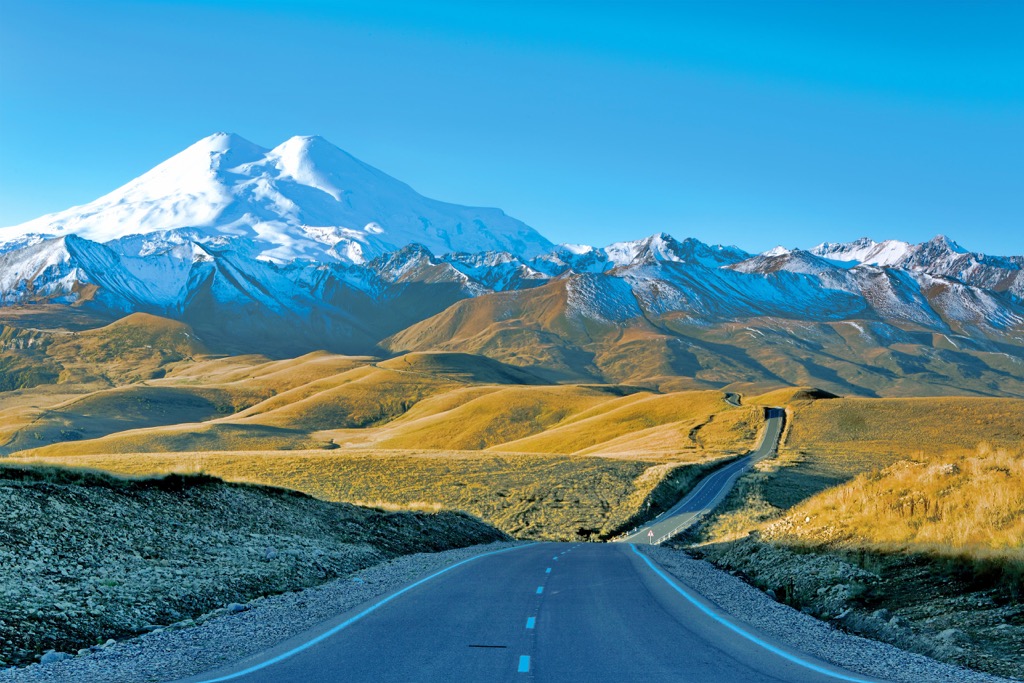
The first word in the name of the mountain system, Greater, means that it is the main part of the Caucasus, both in size and length, and in height in relation to the Lesser Caucasus, which is located to the south of it.
The second word, the Caucasus proper, comes from the Greek Καύκασος, which most likely came to them from the Caucasus itself, not the other way around. There is still no consensus as to what exactly this word means, but it is most likely nothing unanticipated: "mountain" or "high mountain," as well as "mountains covered with ice/snow that glisten in the sun."
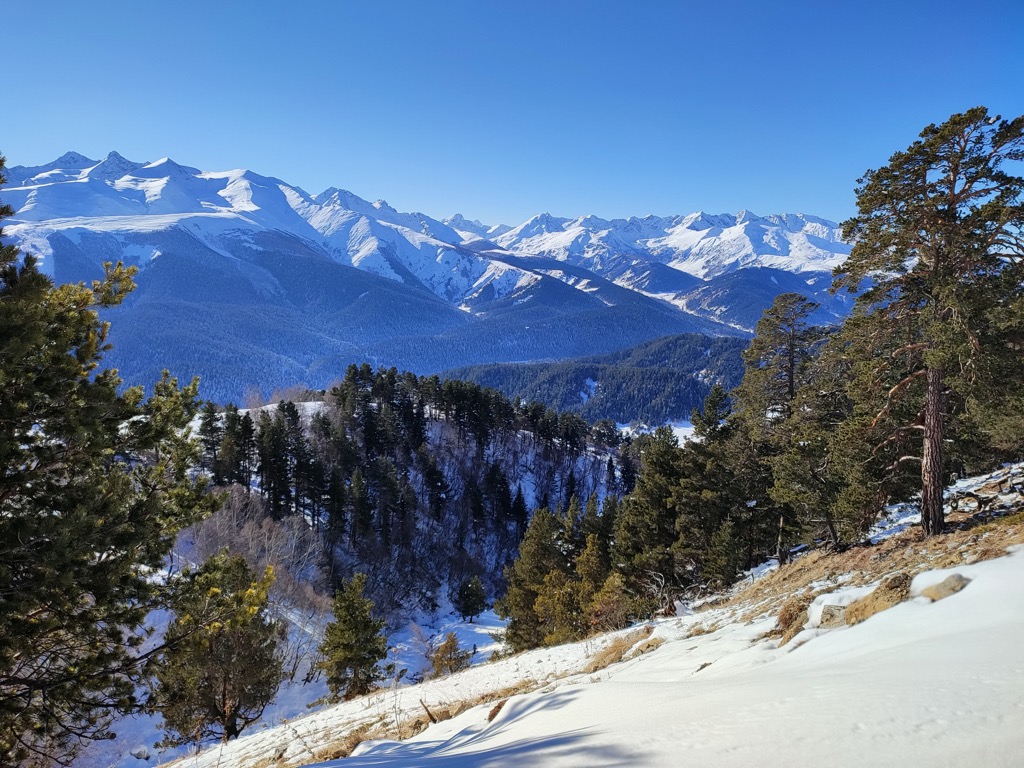
The Greater Caucasus in the languages of peoples of this mountain system are Большой Кавказ (Russian), დიდი კავკასიონი (Georgian), Մեծ Կովկաս (Armenian), Böyük Qafqaz (Azerbaijani), Büyük Kafkas Dağları (Turkish), جبال القوقاز الكبرى (Arabic). In other European languages: Μεγάλος Καύκασος (Greek), Großer Kaukasus (German), Grand Caucase (French), Gran Caucaso (Italian), Gran Cáucaso (Spanish).
The Greater Caucasus is a vast mountainous area about 1,200 km (746 mi) long, stretching in a northwest-southeast direction from the Taman Peninsula in the Black Sea to the Apsheron Peninsula in the Caspian Sea. In other words, the Greater Caucasus literally connects the two largest seas of Western Asia.
The width of the system is ten times less than its length, from 30 to 180 km (15 to 112 mi). The system is widest in the west and narrowest in the center.
The maximum height of the Greater Caucasus (and all of Europe) is Mount Elbrus (West Summit) at 5,642 m (18,510 ft), which is located in southwestern Russia.
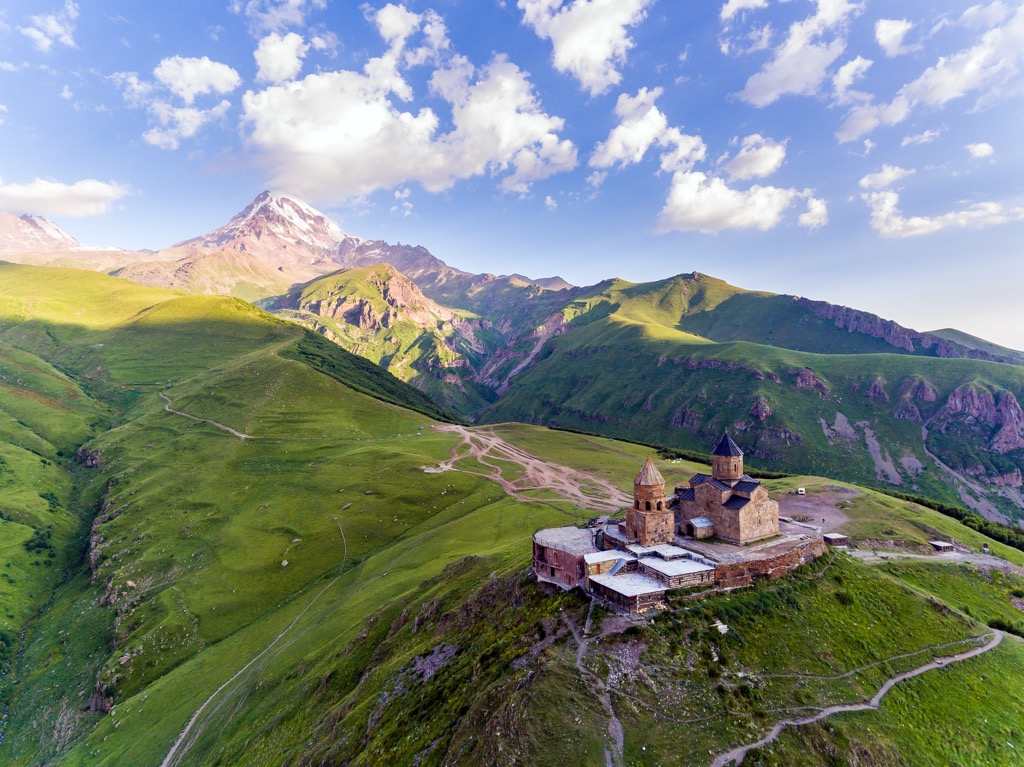
On the administrative map of the region, the Greater Caucasus is also located in two other countries: northern Georgia, for which it is also a natural border, and northwestern Azerbaijan. Between Russia and Georgia, there is also a partially recognized country of Abkhazia, which used to be part of the latter, but withdrew from it.
The highest peaks of the other three countries are Mount Shkhara (5,193 m / 17,037 ft), Bazardyuzyu or Bazardüzü (4,466 m / 14,652 ft), and Dombai-ulgen Glavnaya (4,046 m / 13,274 ft), respectively.
The easiest and fastest way to reach the Caucasus is from Moscow in Russia (by plane to Vladikavkaz, the capital of the Caucasus region or to the resort of Sochi on the Black Sea or to Krasnodar in the namesake region), Tbilisi in Georgia, Yerevan in Armenia, Baku in Azerbaijan, and Trabzon in Turkey, as well as Tehran in Iran.
You can cross the Greater Caucasus from north to south along the Georgian Military Road between Vladikavkaz and Tbilisi. Read more about it in the Caucasus guide.
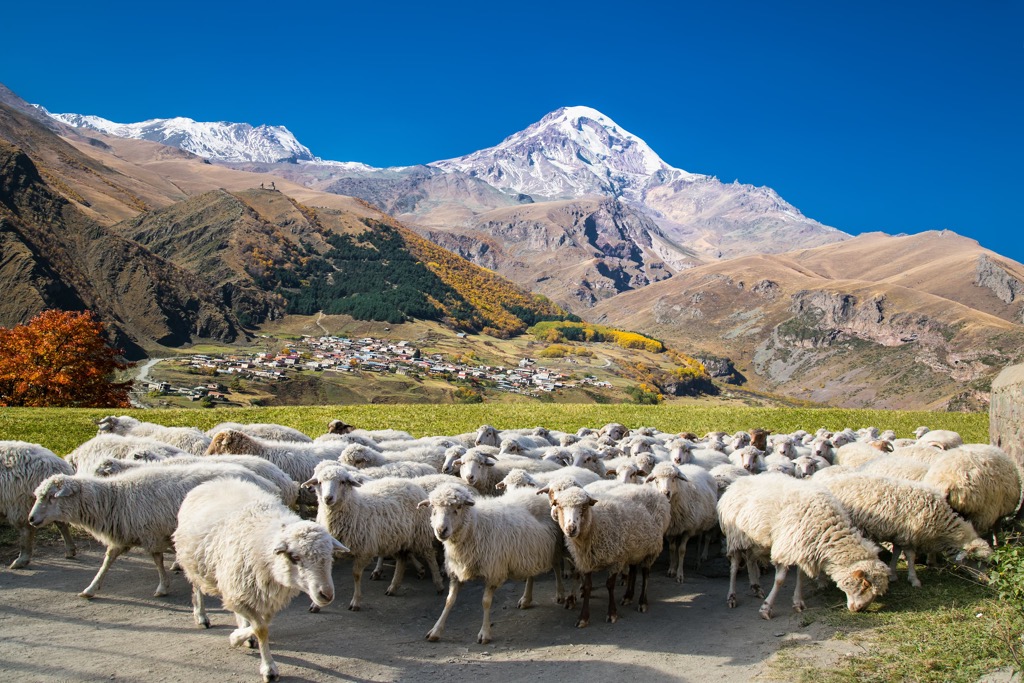
Important: it is impossible to travel along the southern part of the Caucasus from west to east through Abkhazia—you will not be allowed in Georgia, as the country does not recognize the withdrawal of the republic. Azerbaijan and Armenia are also in a state of constant smoldering conflict, although it is possible to move between countries.
But you can travel freely all along the northern part, that is, between Russia and Azerbaijan, as well as between the latter and Georgia.
You can also travel by land to Georgia from Armenia and to both of these countries from Turkey and Iran freely to and through the Lesser Caucasus. At least, at the time of publishing of this guide in January 2023. But, it is better to clarify the information in advance, because, as can be seen, historically the Caucasus is not the most peaceful region of the world at the junction of Europe and Asia.
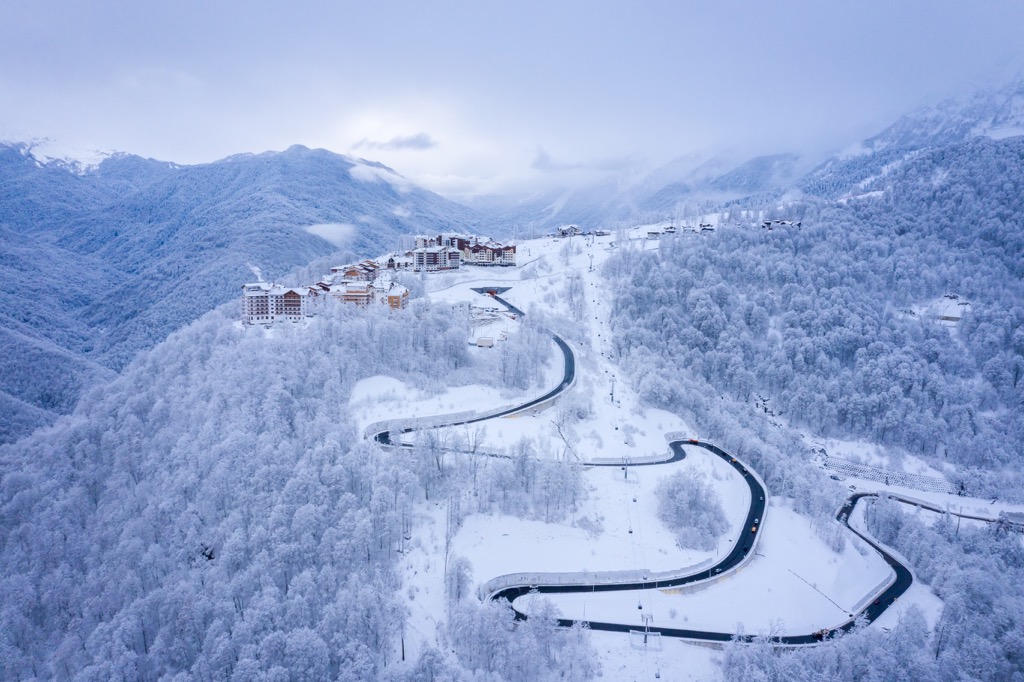
The Greater Caucasus are folded mountains that were formed as a result of the collision (and overlapping) of tectonic plates about the same time as the Alps, that is, about 28–25 million years ago. They are also characterized by volcanic activity: for example, the highest mountain in the Caucasus, Mount Elbrus, is a dormant volcano. Therefore, there are many earthquakes, which have been and can be quite destructive.
The mountains of the Caucasus consist mainly of various kinds of granite and gneiss, but in some of their areas, softer minerals dominate—limestone, dolomite, marble, gypsum, chalk, and others, which are more susceptible to erosion by water. Hence, the Caucasus has many karst formations—deep and extended canyons, ravines, caves, and the like. For example, the system of Vorontsov Caves near the city of Sochi or the whole Lago-Naki karst plateau near Krasnodar in Russia.
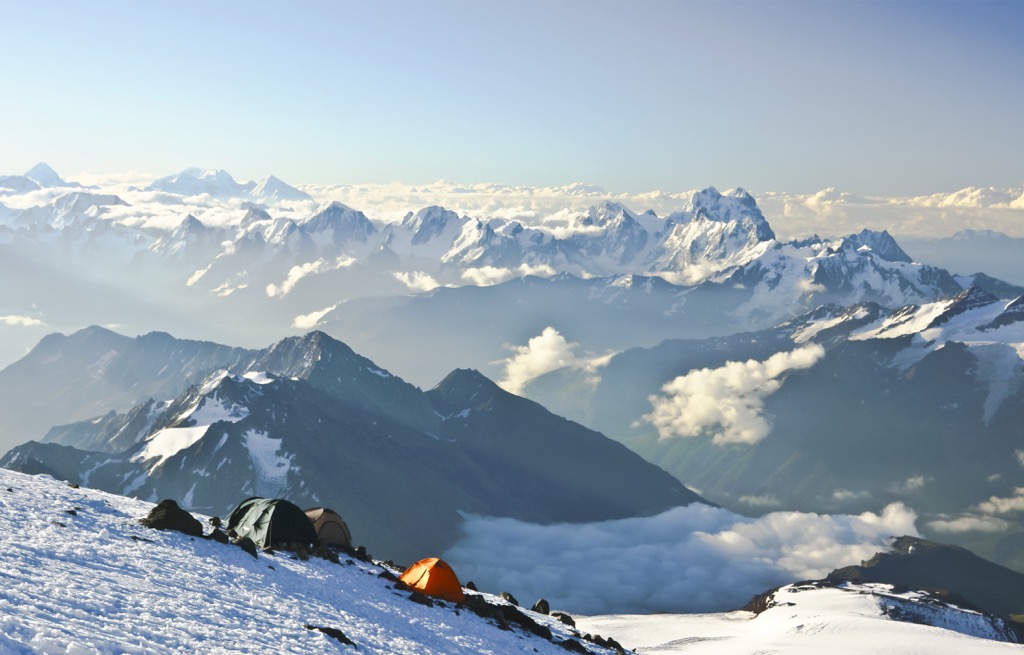
The third feature of the geology of the Greater Caucasus and the Caucasus as a whole—is glaciers, which covers its highest peaks permanently. The largest is Bezengi Glacier of the Bezengi Wall massif, whose highest peak is the same Shkhara (5,193 m / 17,037 ft) in the Republic of Kabardino-Balkaria, Russia, on the border with Upper Svaneti, Georgia, with a total area of more than 35 sq km (sq mi). In total, there are 1629 glaciers of a total area of 1,181 sq km (455 sq mi). But even in the lower mountains of the Caucasus, the snow doesn't melt until late June and falls as early as the end of October—summers here are hot but very short.
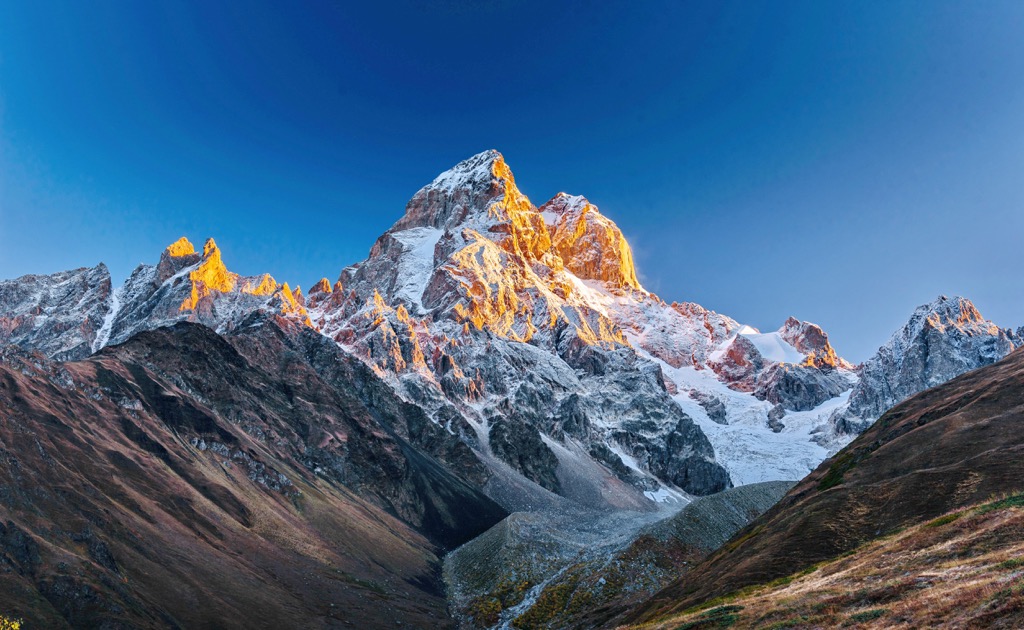
The Greater Caucasus has a rather complicated internal classification, but I will help you understand it.
So, firstly, the Greater Caucasus is divided into three parts from north to south: the Main Caucasus Range or Main Caucasian Range, and the mountain ranges of its two slopes: northern and southern.
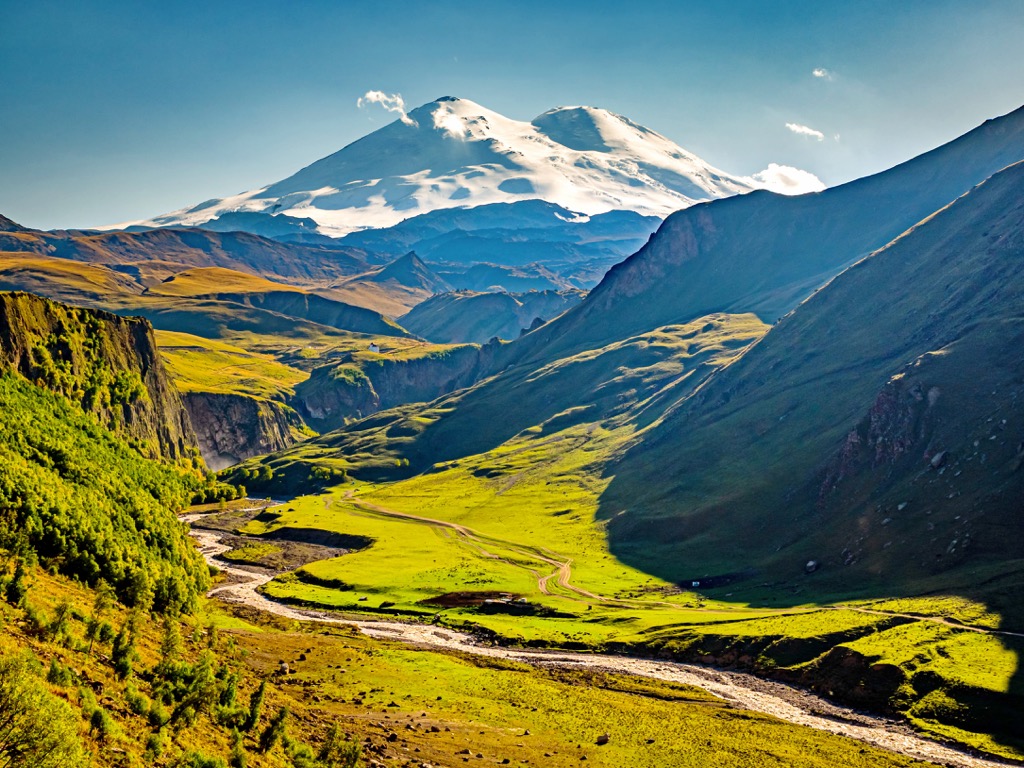
Secondly, the Greater Caucasus is divided into three large parts from west to east:
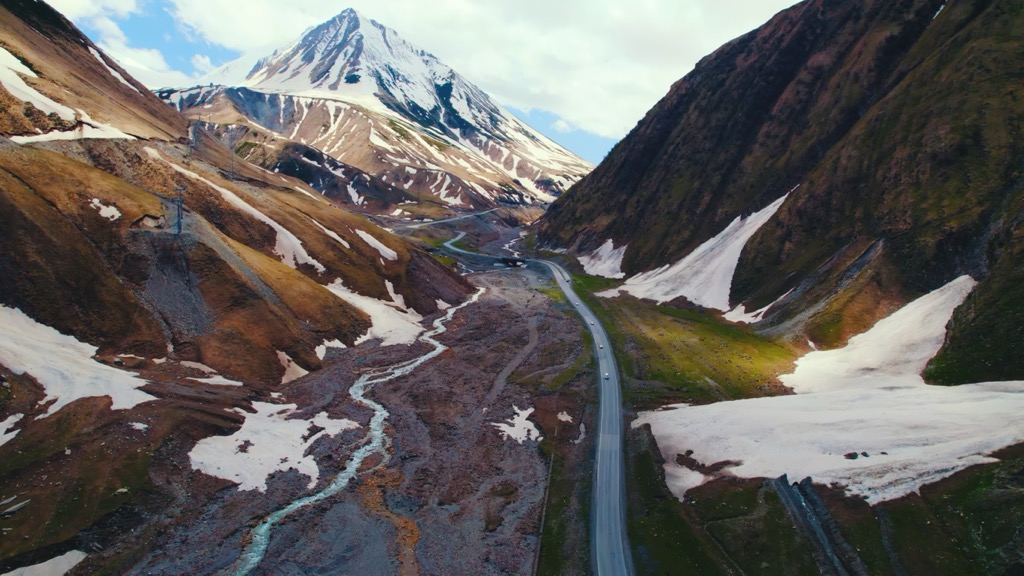
Thirdly, it is important to note that the Greater Caucasus coincides with a large historical and cultural region of modern Russia, called the North Caucasus. Correspondingly, the mountains south of the Greater Caucasus, including the southern slope of the Main Caucasus Range, are called the South Caucasus. It is also a large distinctive region, including, among others, the second main part of the Caucasus, the Lesser Caucasus.
As in other parts of the world, the main hiking trails in the Greater Caucasus lie within the national parks, nature parks, nature reserves, natural monuments, and other natural protected areas. Given the sheer number of the areas, to help you navigate, I counted all national parks (13) as the most popular type. Here they are in each of the four countries:
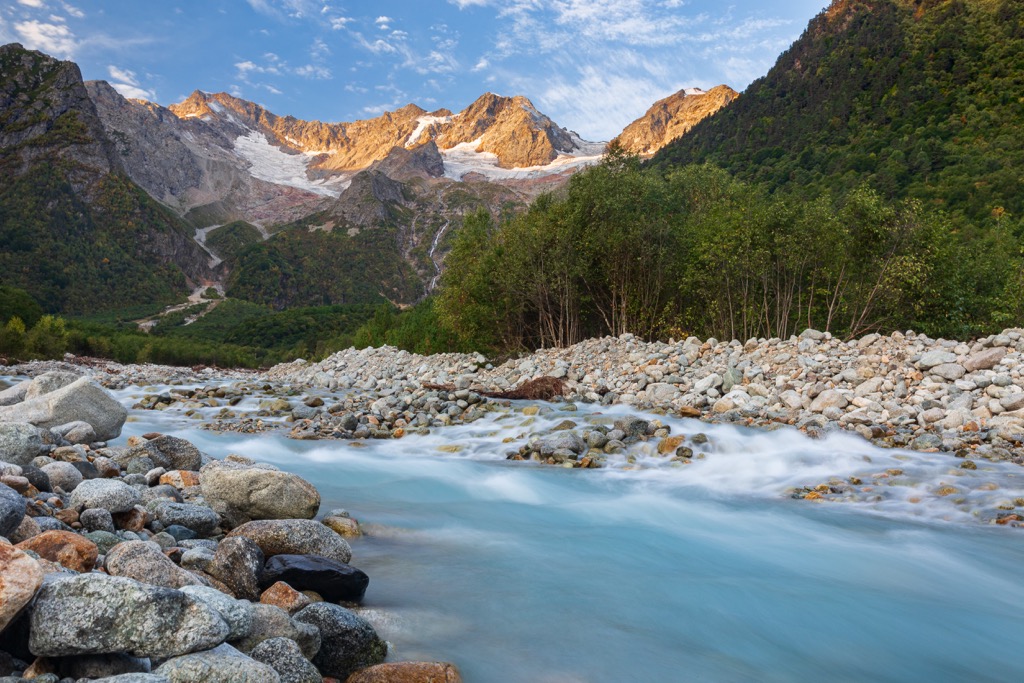
Another way to explore the Caucasus Mountains on foot is long thru-hiking trails similar to the Appalachian Trail in the United States. There are several such trails in the Greater Caucasus system:
The Russian “Caucasian Trail”. The entire Greater Caucasus mountain system can also be hiked in the near future. A group of enterprising people from Russia since 2021 is developing and implementing a plan for a trail called the "Caucasian Trail," which will allow you to hike the range from west to east from one sea to another from Sochi to Derbent in the Republic of Dagestan in Russia.
It is still a project that is being implemented gradually (the trail mostly lacks visit centers, signposts, lodging huts, and other infrastructure), but it already has a map of the route, which you can walk on your own. The trail is about 2,000 km (1,242 mi) long, of which about 1,300 km (808 mi) are actually mountain trails, of which about 400 km (249 mi) are already marked trails.
The route will also be conveniently broken down into individual short routes of up to 100 km (62 mi) around selected natural and cultural landmarks.
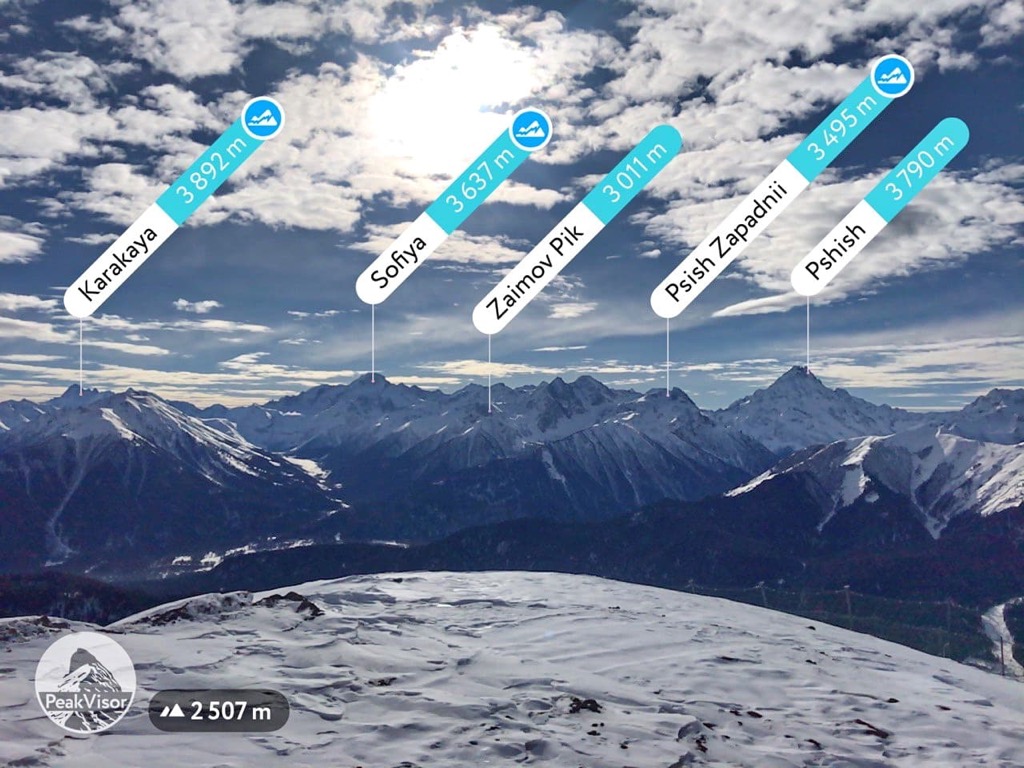
Western Caucasus north to south trail. Alternatively, you can also take the route known as "All-Union Hiking Route Nr. 30," which was the name of the most popular long hiking trail in the Caucasus in the Soviet Union since the 1930s. It is still an existing route and, unlike the Caucasus Trail, which is under construction, has markings, shelters for overnight stays, and other things.
This route crosses the Western Caucasus, a UNESCO site, from north to south. The length of the route is about 100 km (62 mi) or about 14–15 days on the road. It starts on the Lago-Naki Plateau in the tourist base "Gornaya" south of the town of Maikop near the larger city of Stavropol in the Republic of Adygea and leads to the town of Dagomys near Sochi on the Black Sea through the Fisht (2,867 m / 9,406 ft) and its glacier—the main peak on the route, as well as many high mountain passes.
The main peculiarity of the route—on its way you will pass all possible natural landscapes and ecosystems of the entire Caucasus, in one trip.
The Transcaucasian Trail. Meanwhile, in the South Caucasus, in Georgia and Armenia, a similar independent project is underway to build not one but two long trails through the Greater and Lesser Caucasus, each 1,500 km (932 mi) long, under the general name Transcaucasian Trail.
The 861 km (535 mi) long trail through the Lesser Caucasus has already been completed and offers the opportunity to hike through all of Armenia. There are two sections of four marked trails in total on the northern Greater Caucasus trail in the Upper Svaneti region in Georgia between Chuberi and Ushguli (140 km / 87 mi) and Imereti and Racha (74 km / 46 mi) and between Guba to Gusar in the Guba-Khachmaz Economic Region and Sheki and Zaqatala in Azerbaijan of about 100 km (62 mi) in the namesake Shaki-Zaqatala Economic Region.

Interestingly, the trails intersect in the project, as the Little Caucasus trail goes up to the western Greater Caucasus, and the latter trail goes down to the Black Sea.
The Greater Caucasus mountains are not only one of the best places in Europe (and Asia) for hiking, but also for skiing and other winter sports.
The largest ski resort in Russian Greater Caucasus is Rosa Khutor in Krasnodar Krai with more than 100 km (62 mi) of slopes and more than 25 ski lifts, which was the site of the 2014 Winter Olympic Games. The second and third biggest Russian resorts are located just nearby in the same valley of the Mzymta River: Gazprom Mountain Resort with more than 50 km (31 mi) of slopes and more than 20 ski lifts and Krasnaya Polyana Ski Resort with more than 30 km (19 mi) and more than 10 ski lifts.
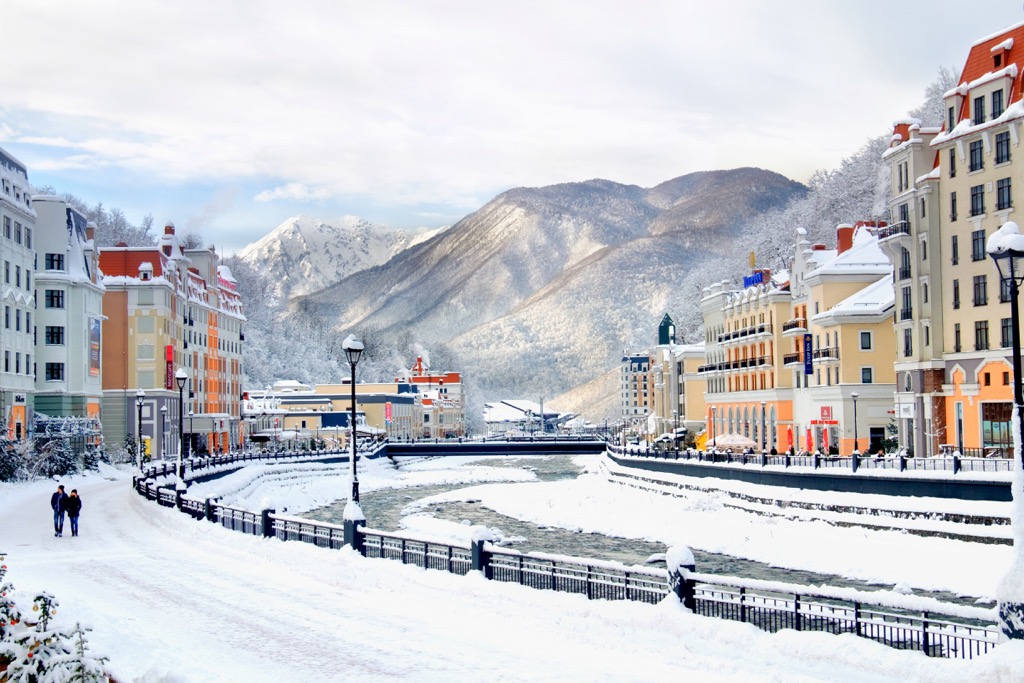
Other main but smaller ski resorts in the Greater Caucasus of Russia, which can be considered as an alternative to Sochi, are Arkhyz and Dombay in Karachay-Cherkessia, and Mt. Elbrus and Mt. Cheget in Kabardino-Balkaria with more than 20 km (12 mi) of slopes and more than 5 ski lifts each. These are the main areas for skiing near Nalchik, Kislovodsk, and Pyatigorsk.
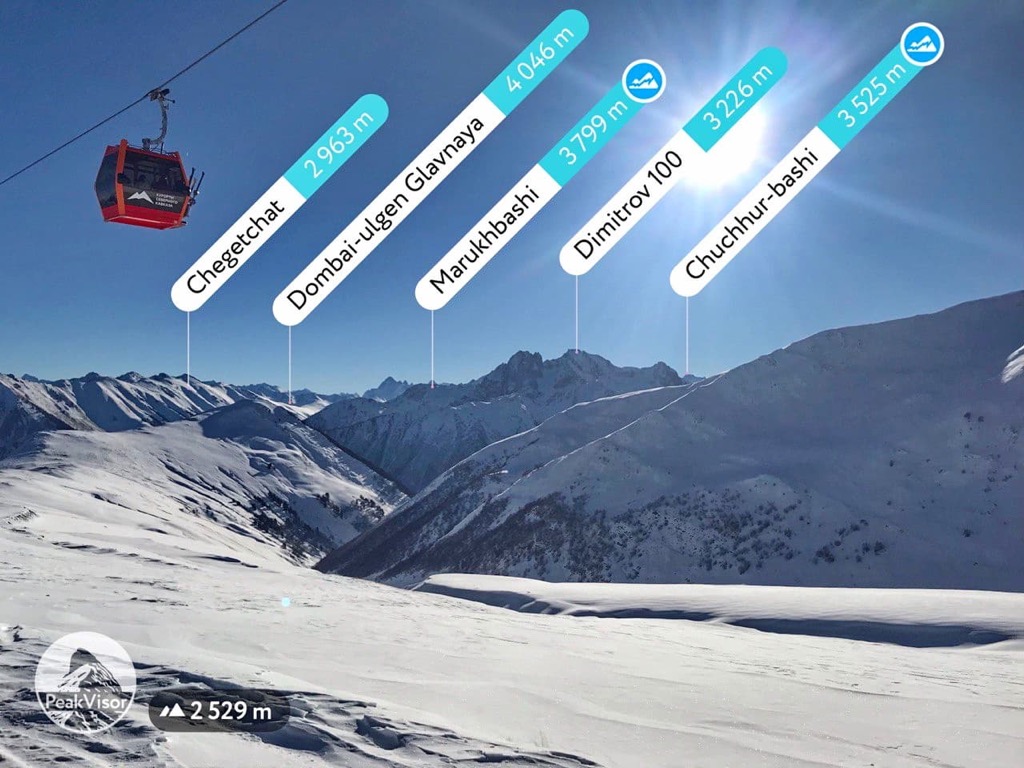
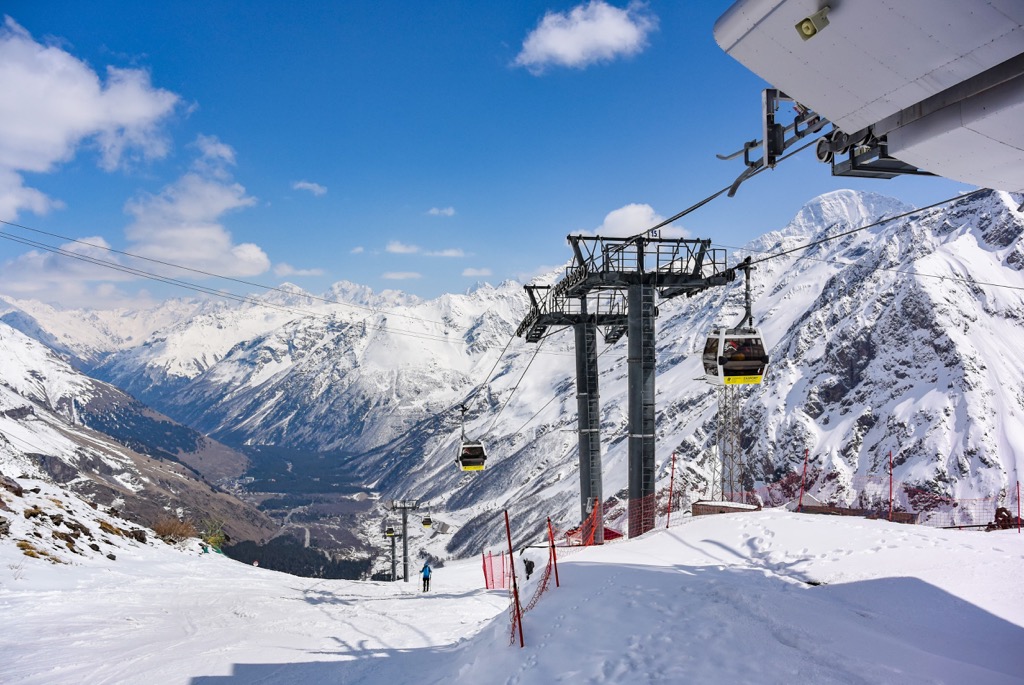
In Georgia, the largest ski resort is Gudauri in the Mtskheta-Mtianeti region with more than 35 km (22 mi) of slopes and more than 15 ski lifts.
There are also two smaller ski resorts in the Greater Caucasus near Mestia, the capital of Upper Svaneti region in the northwest of the country: Tetnuldi-Mestia and Hatsvali-Mestia with more than 13 and 5 km (8 and 3 mi) of slopes and more than 3 ski lifts each. So and still there you have more than 20 km (12 mi) of slopes and more than 10 ski lifs combined, which makes it the third biggest ski area in Georgia after Gudauri and Bakuriani in the Lesser Caucasus.
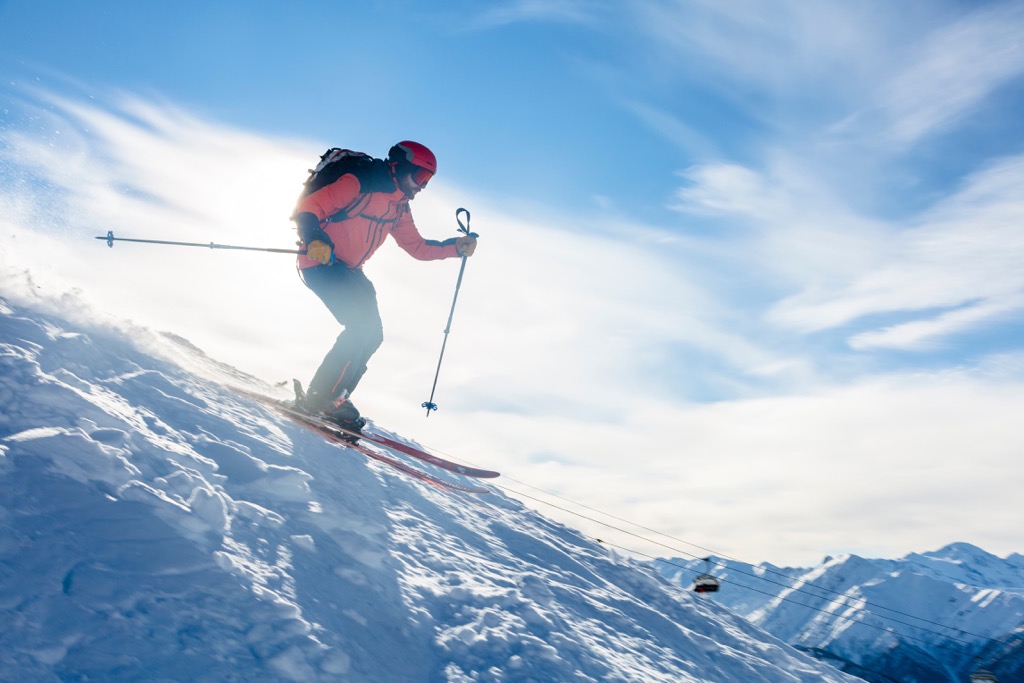
Azerbaijan has two relatively large ski resorts in the Greater Caucasus, namely: Tufandağ with more than 15 km (9 mi) of slopes and more than 3 ski lifts, and Shahdag (Şahdağ) with also more than 15 km (9 mi) of slopes and more than 17 ski lifts in total.

Check the Greater Caucasus ski resort map on the larger Russia and Georgia ski resorts maps in the World Mountain Lifts section of the site. It includes information about open ski lifts / slopes in the Greater Caucasus in real-time with opening dates and hours. There are also year-round cable cars, funiculars, cog railways, aerial tramways, and all other types of mountain lifts.
Before or after hiking in the Caucasus mountains, visit one of the region's official tourist centers:
Vladikavkaz Tourist Information Center
Prospekt Mira, 9, Vladikavkaz, Russia
+78672772878
Visit Sochi Tourist Center
Ul. Vinogradnaya, 20A/1, Sochi, Russia
+78001000382
Krasnodar Tourist Information Center
Ul. Gogolya, 76, Krasnodar, Russia
+78612189777
Tbilisi Tourism Information Center
Pushkin Park, Freedom Square, Tbilisi, Georgia
+995322158697
Yerevan Tourist Information Center
2/1 Nalbandyan Street or 2/5 Baghramyan Avenue
+37411514230
Baku Tourism Information Center
Bulbul Avenue, 14, Baku, Azerbaijan
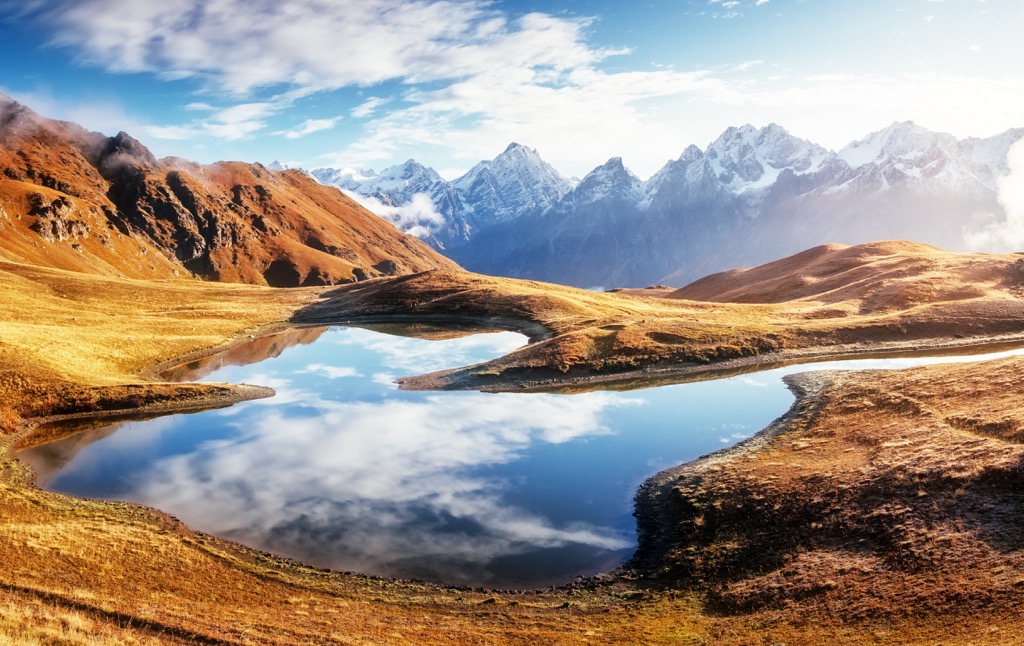
About overnight stays in the mountains during hiking in both the Greater and the Lesser Caucasus, first, you should know that compared to the Alps, the system of mountain huts here is dozens of times smaller or, I could say, weaker. But they still exist in large numbers, especially near the most popular attractions of the mountain system.

Hence, in the Caucasus, hiking is more often meant backpacking or thru-hiking—as an autonomous hike with a tent for several days and longer, because even if you find a mountain hut at the start and finish of your route, in the middle of it there usually will not be any of places to stay except under the starry sky. This also means that, of course, you should not set up a multi-day camp and vice versa use the campsites that already existed before you came.
But at the same time, in the mountains of the Caucasus, you can find permanent large organized campsites from various companies and private entrepreneurs, which is another frequent type of accommodation in this region. For example, there are many of them in the area of Kazbegi and the surrounding mountains: Zeta Camping, Kazbek Camp, Sabertse Campsite, and others.
The situation in the mountain towns and villages is better: There you can find many different types of accommodation, the most popular of which is a guest house—a small hotel with basic services for a relatively low cost. For example, in the eco-settlement Ažek in Sochi National Park, you will find a small guest house from locals, which I highly recommend.
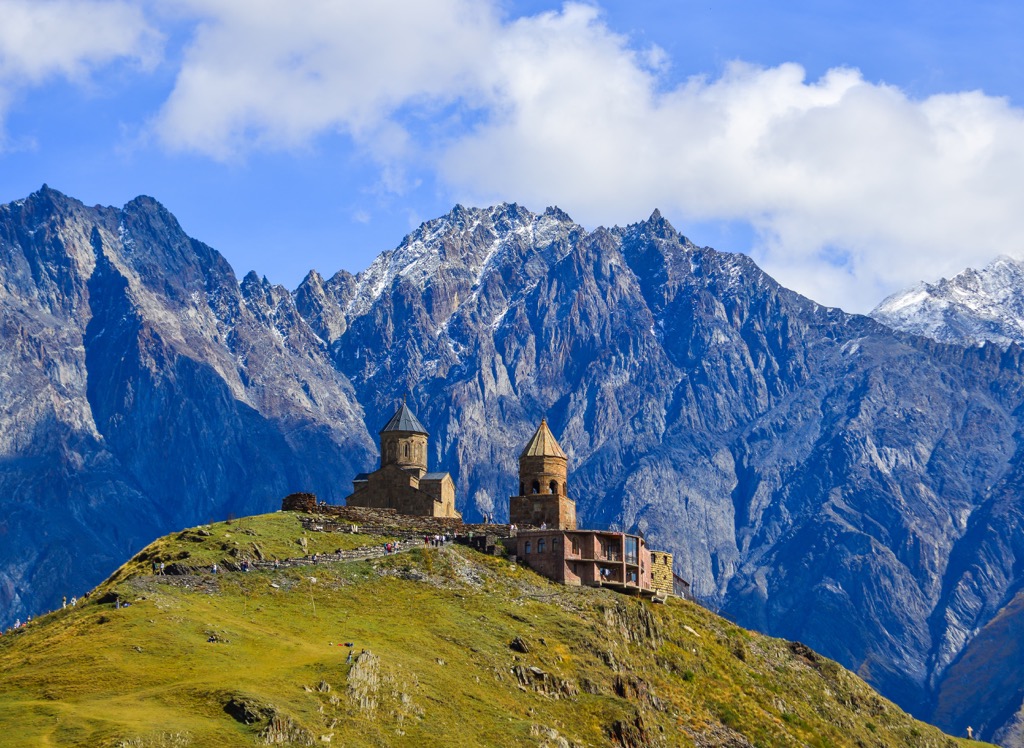
If you have read this guide to the end, you already know the main cities and resorts of the Greater Caucasus. Let's summarize the information and add a few new ones as well.
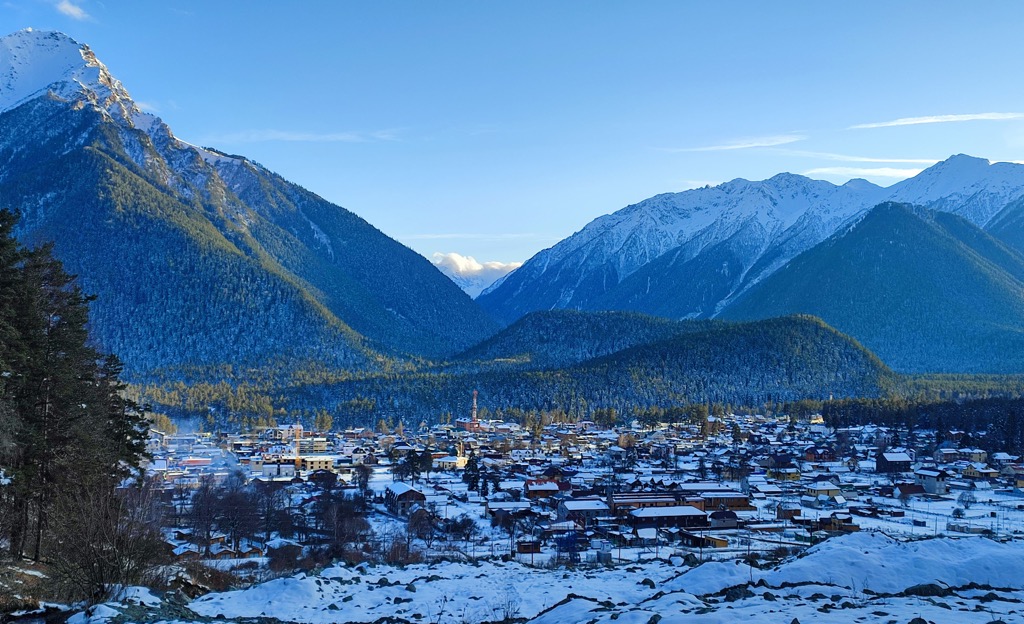
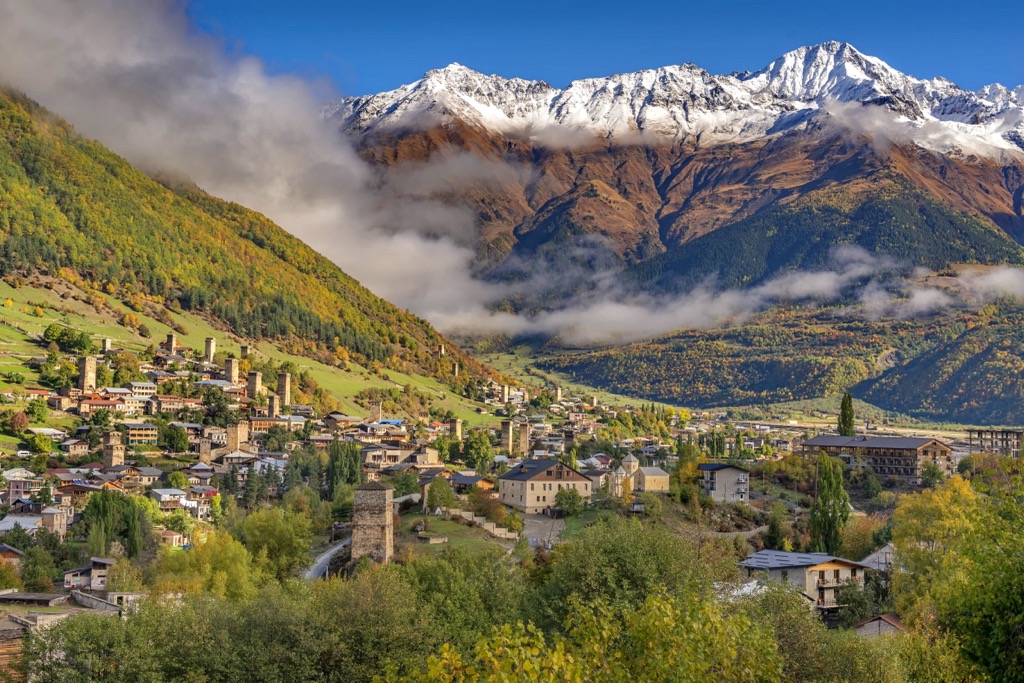
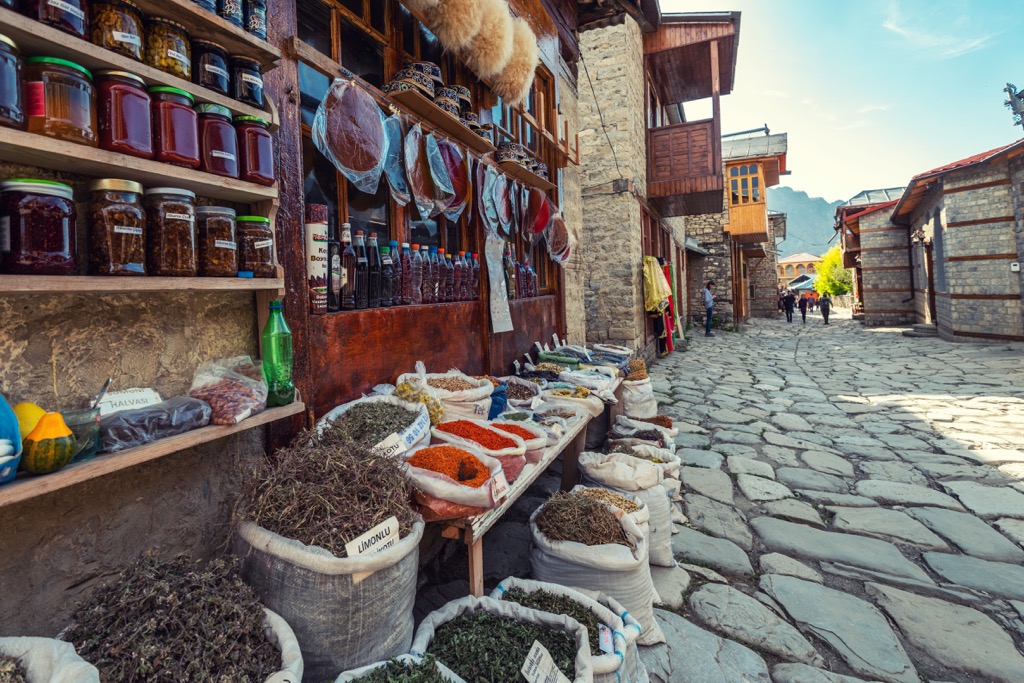
Explore Greater Caucasus with the PeakVisor 3D Map and identify its summits.

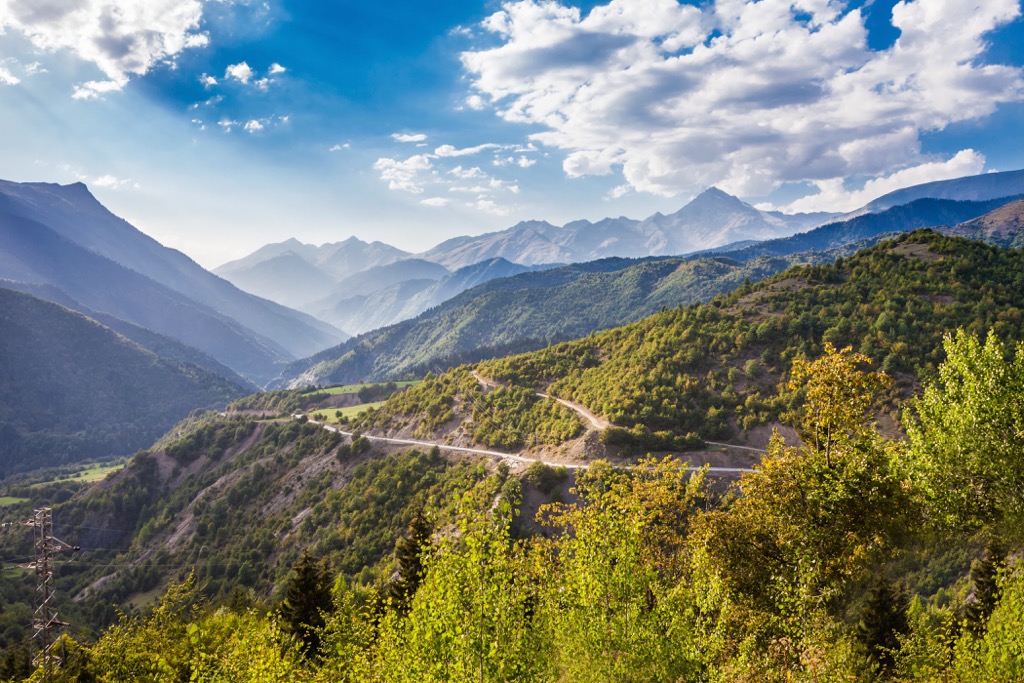
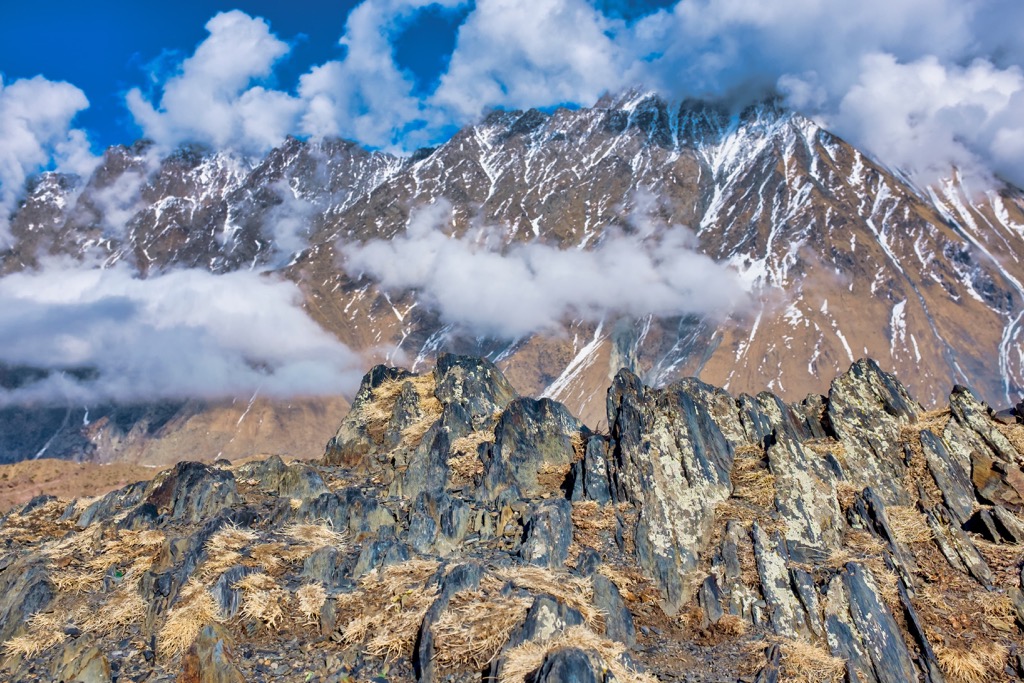
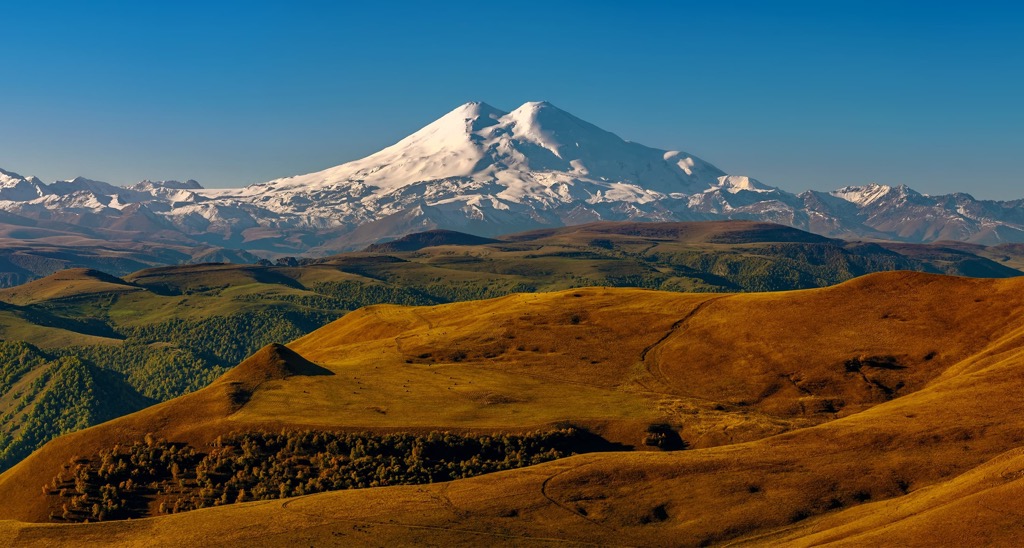




top10
ultra
glacier
volcano
europe-4500ers
caucasus-4500ers
russia-ultras
top10
ultra
europe-4500ers
caucasus-4500ers
russia-ultras
top10
glacier
europe-4500ers
caucasus-4500ers
top10
glacier
europe-4500ers
caucasus-4500ers
top10
glacier
europe-4500ers
caucasus-4500ers
top10
ultra
glacier
volcano
europe-4500ers
caucasus-4500ers
russia-ultras
top50
ultra
russia-ultras
azerbaijan-ultras
top10
ultra
glacier
volcano
europe-4500ers
caucasus-4500ers
russia-ultras
georgia-ultras
top50
ultra
russia-ultras
georgia-ultras
top10
ultra
europe-4500ers
caucasus-4500ers
russia-ultras
top50
ultra
russia-ultras
georgia-ultras
top50
glacier
europe-4500ers
caucasus-4500ers
